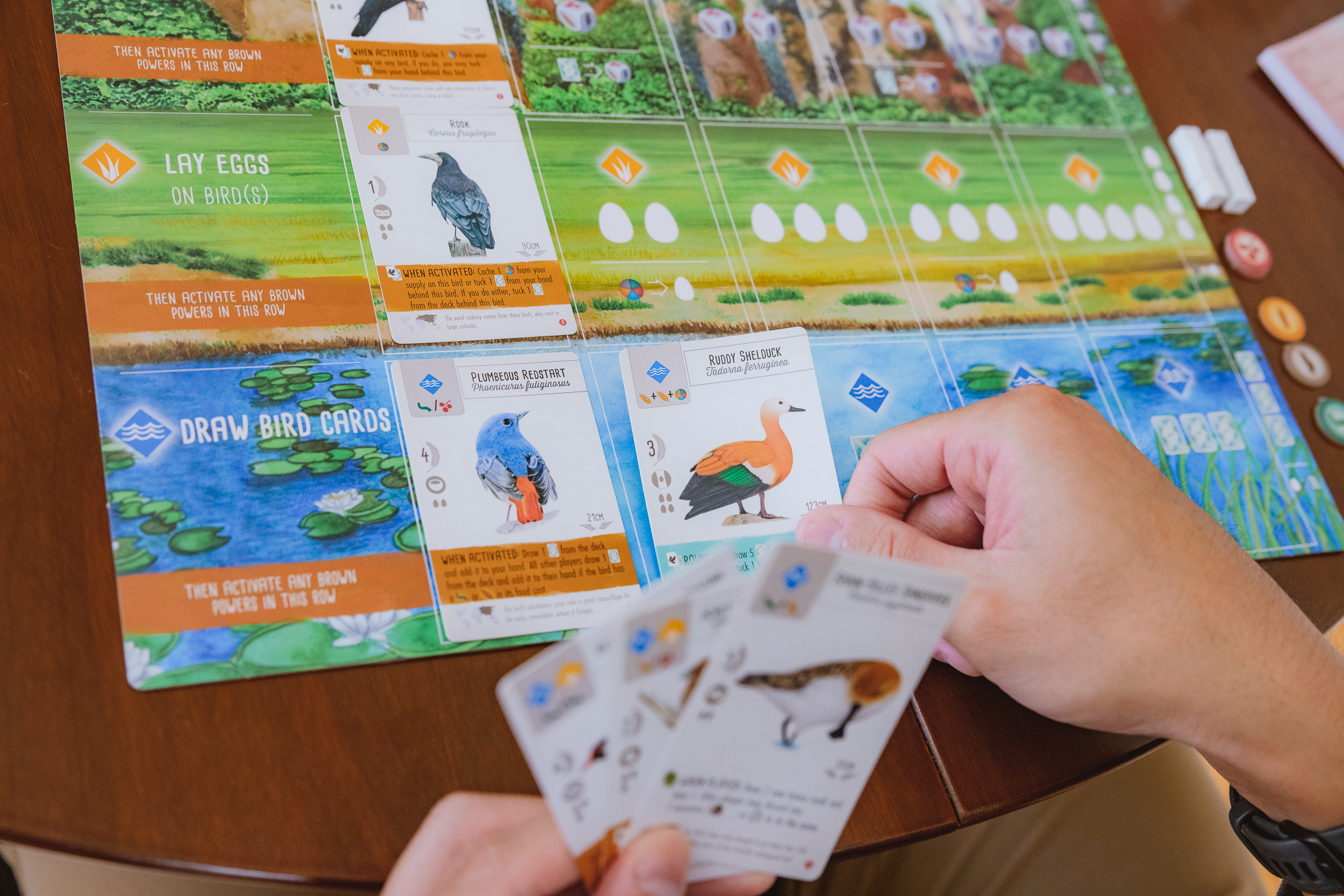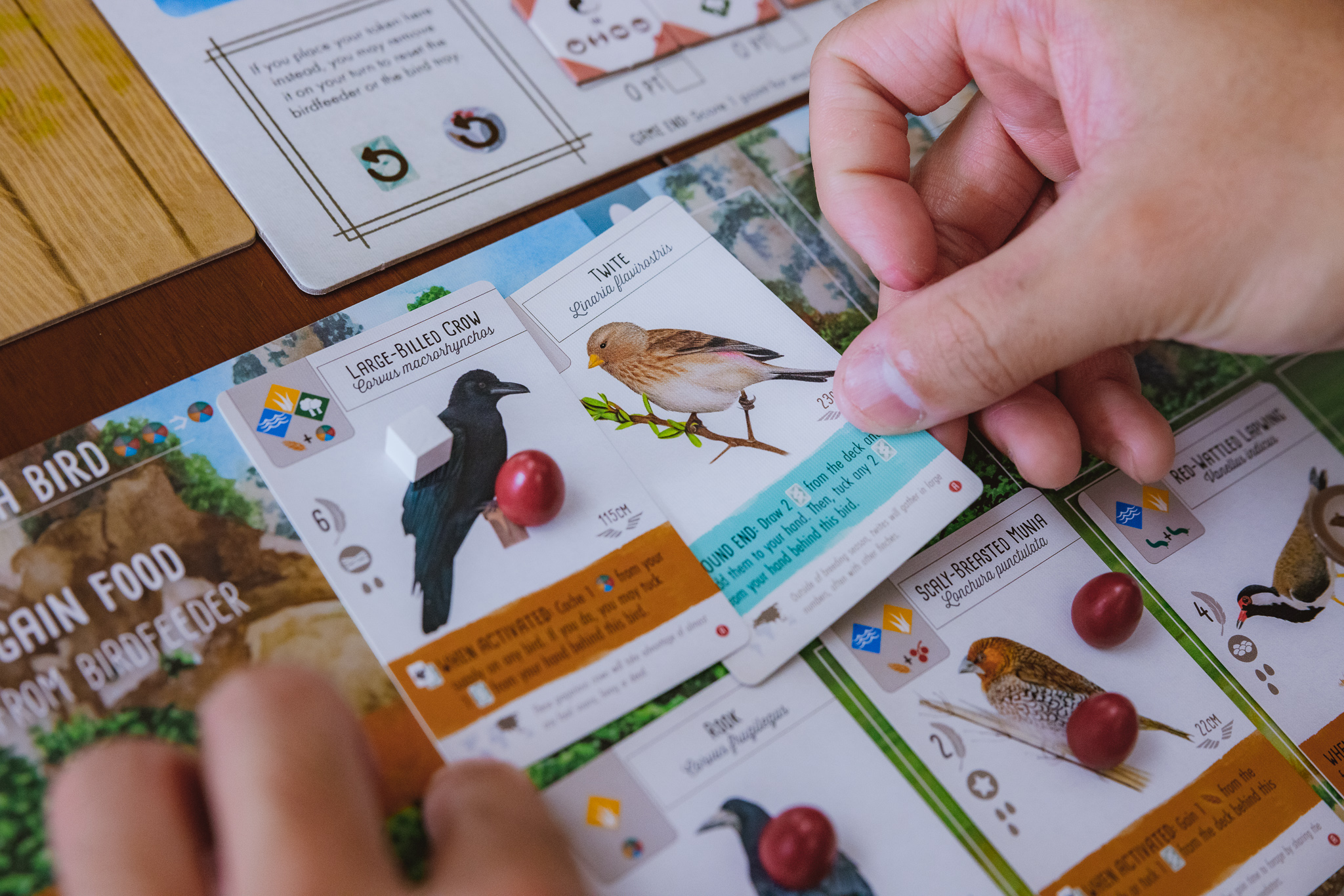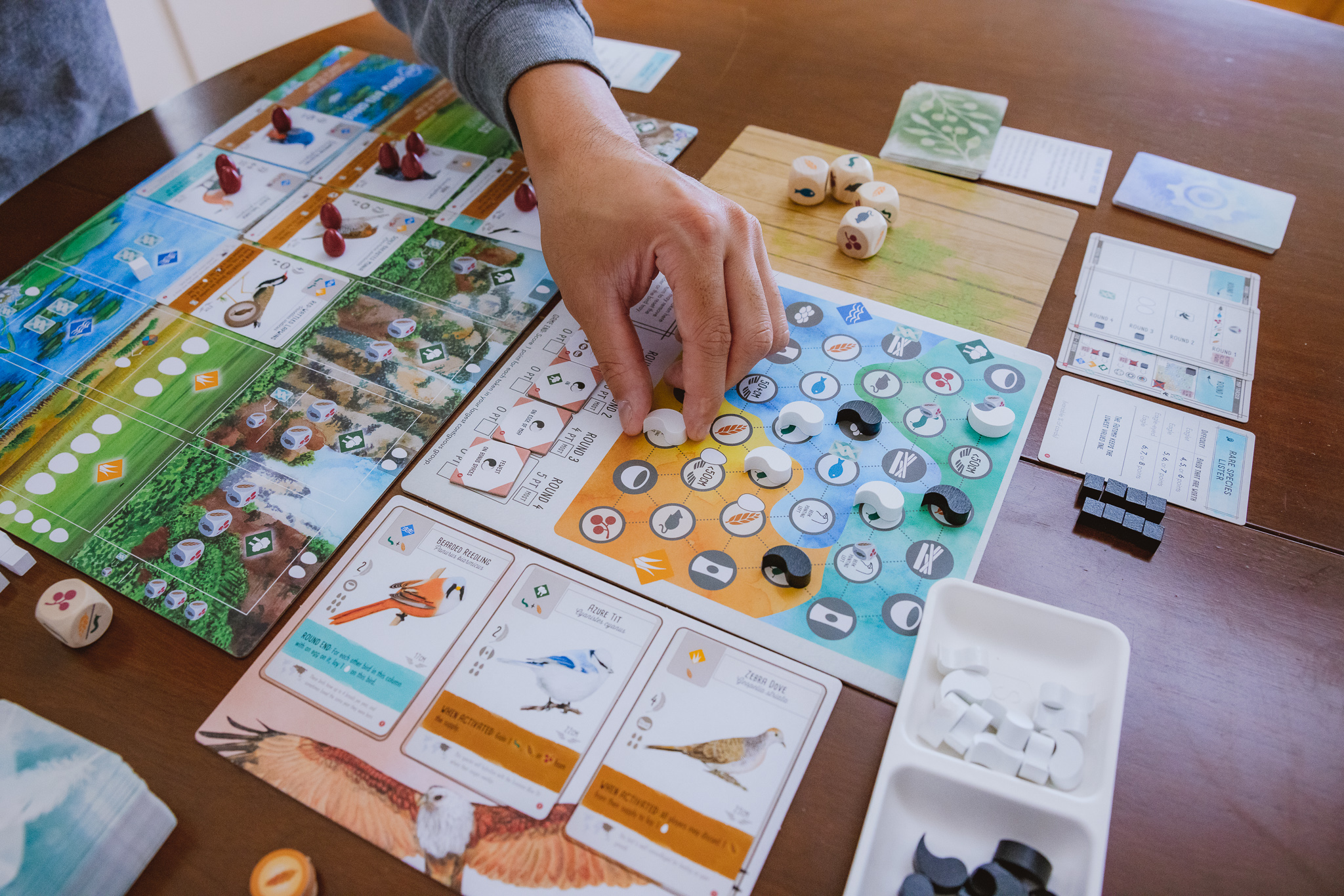I have a feeling that “Wingspan” will persist as a great board game for many years to come. While I do own the “Oceania” and “European” expansions, I sometimes feel that the wild nectar tokens introduced in the former were a bit too powerful and tainted the original game a little bit. Luckily, “Asia” can be played as a standalone experience. It’s primarily a two player game, but can be played solo or used to expand the base game up to six or seven players. Special thanks to Stonemaier Games for sending a copy for review purposes.
1-2 Players, Ages 14+, Average Play Time = 40-70 Minutes
—
Components & Setup Overview
I found it more convenient to just pull the components straight out of the rulebook in order to ease my tendonitis. Check out the picture above for a full list.
Like base game “Wingspan”, bird cards are shuffled and 3 are drawn face-up. Dice are rolled into the feeder, bonus cards are shuffled, and 4 goal tiles are drawn randomly onto the goal spaces. Players get a mat, action cubes, 2 random bonus cards, 5 random bird cards, and 5 food tokens (1 of each type). Players then choose 5 bird card/resources to keep and 1 bonus card to keep. If you’ve played base Wingspan, this is nothing new.
In the 2 player duet mode, you’ll instead use the duet map and duet end-of-round goal tiles. Duet tokens are placed on the 15 bird slots on each player’s mat. These tokens transfer to the main duet map as bird cards are played on their usual spaces.
You can read more about the setup process and the solo / 6-7 player flock mode by checking out the digital rulebook.
—
—
Gameplay Overview
On a player’s turn, they’ll take 1 of 4 actions (as shown on the left side of the player mat.
Key Concept: As birds are played left to right on the three biome rows, actions become more powerful.
1. Play a Bird – Paying the cost in resources, the player can play a card from their hand into the left-most available space onto one of the three biome rows. The bird in question will have icons indicating which rows it can be placed into. When played powers are observed at that time.
2. Gain Food – Pick dice from the supply and gain 1 food per die picked. The number of dice a player can pick depends on the left-most visible space on that action row. Bird cards on the forest row are then activated right to left.
3. Lay Eggs – Place eggs onto any bird cards that can support them. Each bird has an egg limit (some can’t support any) and the number of eggs a player can place depends on the left-most visible space on that action row. Bird cards on the grassland row are then activated right to left.
4. Draw Bird Cards – Draw cards from the face-up row or from the face-down deck. Bird cards on the wetland row are then activated right to left.
There are other rules regarding managing the bird feeder and other small details, but I’ll direct you to the rulebook link above to save on time.
Play continues over the course of four rounds. Points are scored every round-end and at the end of the game.
If you’ve played “Wingspan” before, the above will be nothing new.
—
—
What’s New – The Duet Stuff
When a player plays a bird, they’ll place a duet token onto an unclaimed space on the duet map that matches the habitat of the bird played. Players can then match by nest, food, or wingspan.
It’s important to note that moving birds around do not allow the duet tokens to be placed. Duet tokens on bird spaces are reminders only and do not serve as requirements to play. For that reason I personally keep my duet tokens off to the side to prevent a cluttered board.
Some spaces on the duet board have bonuses and players get that bonus when placing a token on them.
This board is used primarily for the new duet end-of-round goals.
Again, all of this is a broad overview. You’ll want to consult to rulebook for more information.
—
—
The Review
I liked “Asia”. Like its counterparts, component quality and the art are top-notch. “Wingspan” has a lot of table presence and “Asia” is no different in that regard. The new duet stuff is simple and easy to implement. The solo / automa is decent but I could never see myself playing a 6-7 player flock game…not because the variant is a bad one, but I imagine the game would drag on for far too long and the table space needed would be significant.
While this may be an unpopular opinion, I feel like “Asia” is going to appeal to a very unique / niche audience. To anyone who owns NONE of the “Wingspan” products, base game “Wingspan” supports 1-5 players while “Asia” supports 1-2 and both games cost roughly $40 on their own (currently). If a new, potential “Wingspan” buyer looks at both, they’ll probably gravitate toward the product that offers more and has expansions already in play. “Wingspan” has more cards too, compared to “Asia”. It’s worth mentioning that you can buy the “Asia” bird cards from the Stonemaier website if you don’t care about the duet stuff. The cards can be integrated into the base game.
For existing “Wingspan” owners, “Asia” offers a slightly new way to play and shakes things up a bit. It’s especially ideal for couples as the duet is designed around two players. So…along those lines…IF you already own “Wingspan” and IF your normal player count is two, “Asia” is a no-brainer. Even if the latter is true and the former is not, I recommend getting the base game first as it has more flexibility at roughly the same price. As a stand-alone product, I can’t deny that it’s a great entry into an already great “Wingspan” series.
—
Score: 8/10 (Great)





